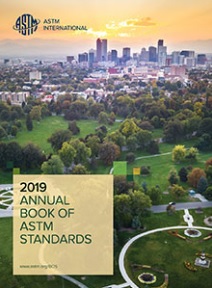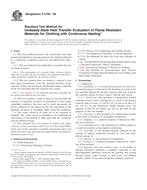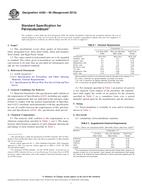1.1 This guide is organized to discuss the three major components of significance in the drying behavior of spent nuclear fuel: evaluating the need for drying, drying spent nuclear fuel, and confirmation of adequate dryness.
1.1.1 The guide addresses drying methods and their limitations in drying spent nuclear fuels that have been in storage at water pools. The guide discusses sources and forms of water that remain in SNF, its container, or both, after the drying process and discusses the importance and potential effects they may have on fuel integrity, and container materials. The effects of residual water are discussed mechanistically as a function of the container thermal and radiological environment to provide guidance on situations that may require extraordinary drying methods, specialized handling, or other treatments.
1.1.2 The basic issue in drying is to determine how dry the SNF must be in order to prevent issues with fuel retrievability, container pressurization, or container corrosion. Adequate dryness may be readily achieved for undamaged commercial fuel but may become a complex issue for any SNF where cladding damage has occurred during fuel irradiation, storage, or both, at the spent fuel pools. Dryness issues may also result from the presence of sludge, crud, and other hydrated compounds connected to the SNF that hold water and resist drying efforts.
1.2 This standard does not purport to address all of the safety concerns, if any, associated with its use. It is the responsibility of the user of this standard to establish appropriate safety and health practices and determine the applicability of regulatory limitations prior to use.
Product Details
- Published:
- 01/01/2008
- Number of Pages:
- 16
- File Size:
- 1 file , 240 KB


